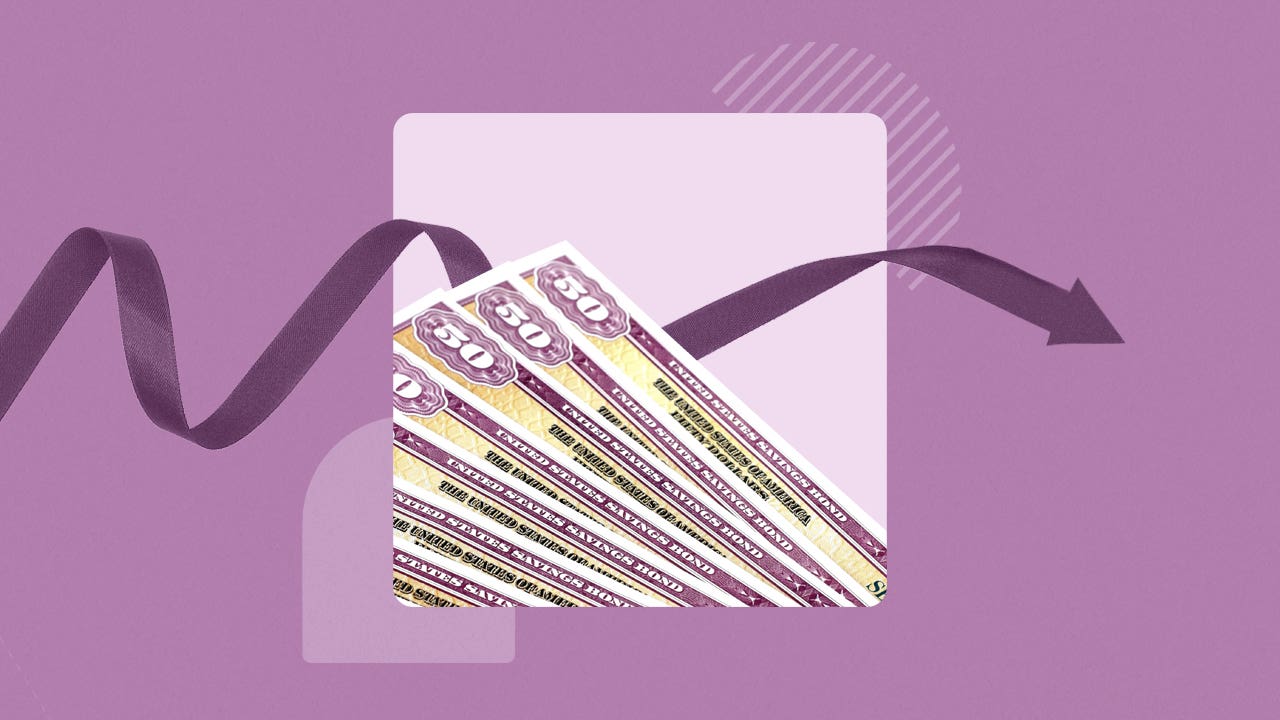Series I bond rates drop to 3.11% — here’s how to buy them

If you’re looking for an investment with a high interest rate, inflation protection and the safety of government backing, then Series I bonds could be an attractive addition to your portfolio. The Treasury Department announced that I bonds will now pay 3.11 percent for a full six months on any bonds issued between Nov. 1, 2024, and April 30, 2025. The new rate includes a fixed portion of 1.2 percent.
The interest rate on these bonds increases as inflation rises, ensuring that your payout keeps pace with rising prices and that you don’t lose purchasing power over time. Of course, if inflation falls, then so does the rate on these bonds. In contrast to the Series I bonds, the current interest rate on Series EE bonds is 2.6 percent.
This inflation protection on I bonds has caused a stir among savers in the last few years, as it rocketed to the highest level in some 40 years. That level of inflation pushed the rate on I bonds to 9.62 percent for bonds issued between May and October 2022 and then 6.89 percent for bonds issued between November 2022 and April 2023.
The new rate of 3.11 percent reflects a continued decline in inflation, given the Federal Reserve’s interest rate cut of 50 basis points in September.
Here’s how to buy Series I bonds, how these inflation-indexed investments work and what you need to watch out for. Plus, we’ll reveal a little-known tip that lets you invest even more in these special bonds.
How to buy Series I bonds
1. Determine if you qualify
The U.S. Treasury doesn’t let just anyone purchase I bonds, so you’ll need to see if you qualify to buy them.
You’ll need to be one of the following:
- A U.S. citizen, even if you live abroad
- A U.S. resident
- A civilian employee of the U.S. government, regardless of where you live
In addition, trusts and estates can purchase I bonds in some cases, but corporations, partnerships and other organizations may not.
2. Set up a TreasuryDirect account
If you meet the qualifications, you can proceed with opening a TreasuryDirect account. This account allows you to purchase bonds (including Series EE bonds) as well as Treasury bills, Treasury notes, Treasury bonds and TIPS right from the government.
For individuals setting up a TreasuryDirect account, you’ll need a taxpayer identification number (such as a Social Security number), a U.S. address of record, a checking or savings account, an email address and a web browser that supports 128-bit encryption.
You’ll enter your information at the prompts and can establish the account in just a few minutes. You’ll set up a password and three security questions to help protect your account.
Children under age 18 cannot set up a TreasuryDirect account directly, but a parent or other adult custodian may open an account for the minor that is linked to their own.
3. Place your order
After you’ve set up the account, TreasuryDirect will email your account number, which you can use to log in to your account. Once you’re in the account, you can select “BuyDirect” and then choose Series I bonds and how much you’d like to purchase. Then select the bank account to use and the date you’d like to make the purchase. You can also set up a recurring purchase.
For electronic bonds over $25, you can buy in any increment down to the cent. That is, you could purchase a bond for $76.53, if you wanted.
Review your purchase and then submit your order. Once your order is complete, your TreasuryDirect account will hold your bonds and you can view them there at any time.
If you want to use your federal tax refund to buy paper I bonds, you should complete Form 8888 and submit it when you file your tax return. Paper bonds are sold in increments of $50, $100, $200, $500 and $1,000. After the IRS processes your return, your bonds will arrive in the mail.
What are Series I bonds and how do they work?
A Series I bond is a bond issued by the U.S. federal government that earns interest in two ways: a fixed rate and a variable rate that is adjusted twice a year based on the inflation rate. As inflation rises or falls, that variable rate is changed to offset it, protecting the money’s purchasing power.
The bond earns interest for 30 years or until you cash out of it — and it’s backed by the U.S. government, historically one of the best credit risks in the world.
For the first six months that you own the I bond, you’ll get the prevailing interest rate at that time. For example, any I bond issued between November 2024 and May 2025 earns interest at 3.11 percent annually. That means even if you purchase the bond in April, you’ll still earn that rate for a full six months. Then your bond will adjust to whatever new rate is announced in April.
The bonds cannot be cashed for the first 12 months that they’ve been owned. If you cash in the bond before it’s at least five years old, you’ll pay a penalty of the last three months’ worth of interest. However, special provisions may apply if you’ve been affected by a natural disaster.
Series I bonds do offer some tax advantages, too. Interest on the bonds is exempt from state and local taxes, though you’ll still have to pay federal taxes on the gains. And using the interest to pay for higher education may help you avoid paying federal taxes on the interest income, too.
Unfortunately, Series I bonds can’t be purchased in a tax-advantaged account such as an IRA.
How much can you invest in Series I bonds?
In any calendar year, an individual can acquire up to the following amounts of Series I bonds:
- $10,000 in electronic I bonds from TreasuryDirect
- $5,000 in paper I bonds with your federal income tax refund
That means an individual could purchase up to $15,000 in I bonds each year, assuming their tax refund is large enough to max out the paper I bond portion. Many savers aren’t aware that their federal tax return gets them an extra helping of I bonds, so it may make sense to withhold more money from your paycheck if you’re looking to take advantage of this bonus allotment.
Any bonds that you buy for yourself or that are purchased for you count toward the limit. There’s an exception to this rule in the case of a bond that has been transferred to you due to the death of the bond’s original owner. In this case, the amount doesn’t count against the limit.
It’s also important to note that these limits apply to recipients of I bonds. So an individual could max out that limit as gifts for multiple TreasuryDirect account holders, including children. For gifts, the same annual limits apply to the recipient: $10,000 for electronic bonds and $5,000 for paper bonds purchased through federal tax returns.
Therefore, an individual might be able to purchase as much as $15,000 in I bonds in a year, while a family of four could acquire as much as $60,000 in I bonds in a single calendar year. However, the family would need a steep refund check to afford that potential $20,000 in paper bonds.
(That said, there’s a little-known way to invest even more, though it requires some legwork.)
Bottom line
With Americans recently battling high inflation, savers are looking for any way to protect themselves from rising prices. Series I bonds can help you do that, although savers are capped at annual limits. Plus, you get the safety of a government-backed asset and a relatively high interest rate, at least for the near future.
— Bankrate’s Logan Jacoby contributed to an update of this story.
Editorial Disclaimer: All investors are advised to conduct their own independent research into investment strategies before making an investment decision. In addition, investors are advised that past investment product performance is no guarantee of future price appreciation.






